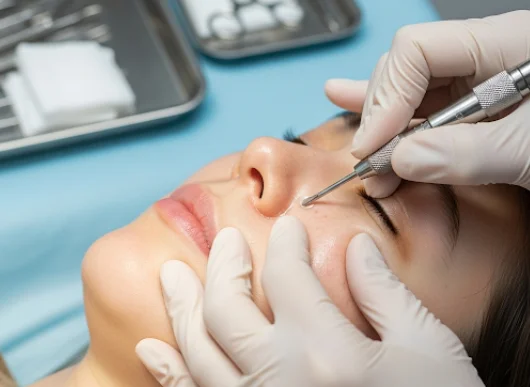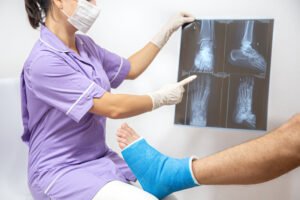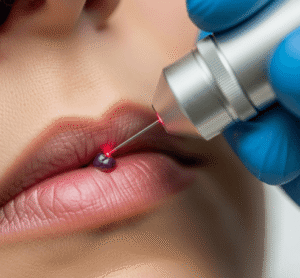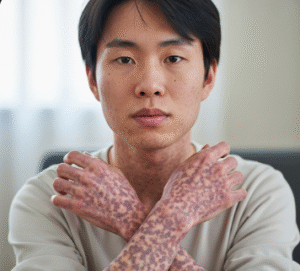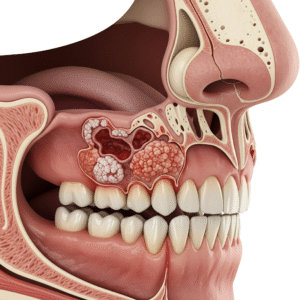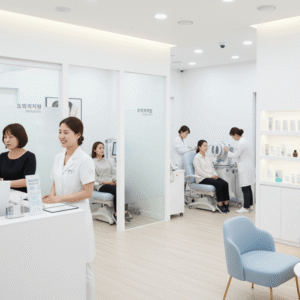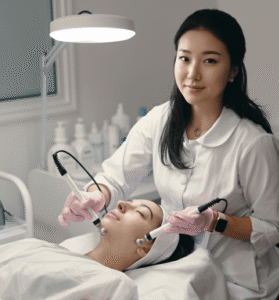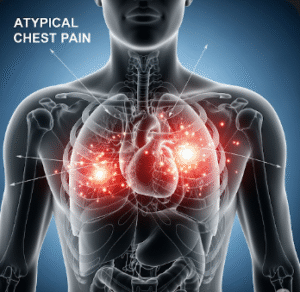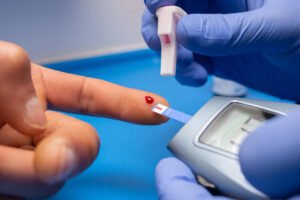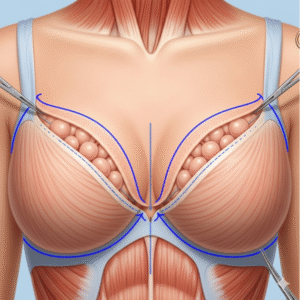What it is
Punch elevation treatment in Korea is a surgical dermatological technique used to treat deep boxcar acne scars. It involves removing the base of the scar with a small punch tool while keeping the surrounding skin intact. Instead of discarding the tissue, the base of the scar is lifted upward to align with the surrounding skin surface. The area is then allowed to heal naturally or may be fixed in place using sutures, skin glue, or supportive dressings.
This method is unique because it does not remove the entire scar (as punch excision does) but rather elevates and repositions the depressed scar tissue, creating a smoother and more level skin surface.
Types of scars best treated with punch elevation include:
- → Deep boxcar scars with sharp edges and flat bottoms
- → Small depressed scars that are too wide for TCA CROSS but too shallow for excision
- → Mixed scars where multiple techniques may be combined
Korean dermatologists often combine punch elevation with laser resurfacing, subcision, microneedling, or PRP to maximize results.
Why it’s Done
Punch elevation is chosen when other acne scar treatments fail to significantly improve boxcar scars.
➤ Medical Reasons
- • To release and reposition scar tissue without removing too much skin
- • To promote collagen regeneration in the lifted scar
- • To reduce skin irregularities that may trap oil or bacteria
➤ Cosmetic Reasons
- • Reduces the depth of depressed scars
- • Creates smoother, more even skin texture
- • Improves skin tone and uniformity
- • Prepares the skin for final refinements with laser resurfacing
➤ Psychological Benefits
- • Restores confidence by improving stubborn scars
- • Helps patients achieve the “glass skin” effect popular in K-beauty
- • Reduces emotional distress caused by visible acne scars
👉 In Korea, punch elevation is highly valued as part of a comprehensive scar revision program tailored to each patient.
Alternatives
Punch elevation is excellent for boxcar scars, but alternatives may be better suited for other scar types.
➤ Topical Alternatives
- • Retinoids (tretinoin, adapalene) → encourage skin turnover
- • Vitamin C, niacinamide → brighten pigmentation but not effective for deep scars
- • Scar gels with silicone → prevent raised scars but limited effect on atrophic scars
➤ Procedural Alternatives
- • Punch excision → best for ice-pick scars (scar tissue removed entirely)
- • TCA CROSS → chemical reconstruction for narrow, deep scars
- • Subcision → ideal for rolling scars tethered by fibrotic bands
- • Laser resurfacing (CO₂, Fraxel, Er:YAG) → smooths texture but less effective for sharply defined boxcar scars
- • Microneedling or RF microneedling → stimulates collagen remodeling for shallow scars
- • Fillers → temporary lifting of depressed scars
⚠️ For sharp-edged boxcar scars, punch elevation is often the preferred treatment because it realigns the scar tissue to match surrounding skin.
Preparation
Proper preparation helps ensure a safe and effective outcome.
➤ General Preparation
- • Consultation with a dermatologist to identify scar type and suitability
- • Discontinue retinoids, exfoliants, or harsh skincare 1 week before treatment
- • Avoid blood-thinning medications (aspirin, NSAIDs, alcohol) to reduce bleeding risk
- • Keep skin hydrated and healthy prior to the procedure
- • Ensure no active acne or infections are present
➤ Specific Preparation in Korean Clinics
- • Application of topical numbing cream or local anesthesia before the procedure
- • Pre-treatment skincare routines may be prescribed to reduce pigmentation risk
- • Some clinics use oral antibiotics or topical creams if infection risk is high
How it’s Done
Punch elevation is performed in a dermatology clinic setting, usually lasting 20–45 minutes, depending on the number of scars.
Step-by-step process:
- → Cleansing & anesthesia: The area is disinfected, and local anesthesia is applied.
- → Punch tool placement: A small circular punch tool (1.5–3 mm) is positioned over the scar.
- → Scar base removal: The base of the scar is carefully cut free while preserving the surrounding skin.
- → Elevation: The scar tissue is lifted to the level of the surrounding skin.
- → Fixation & healing:
- Sometimes sutures are used to hold the tissue in place.
- In other cases, skin glue or compression dressings are applied.
- → Post-procedure care: Ointments and protective dressings support healing.
Combination approaches in Korea:
- • Punch Elevation + Laser Resurfacing → smooths edges and surface texture
- • Punch Elevation + Subcision → for patients with mixed scar types
- • Punch Elevation + PRP/Rejuran Healer → accelerates healing and collagen stimulation
Recovery
Recovery after punch elevation is generally shorter than punch excision, but careful aftercare is needed.
➤ Immediate Recovery (1–3 Days)
- • Mild redness, swelling, or tenderness
- • Small dressing or bandage over treated scars
➤ Short-Term Recovery (1–2 Weeks)
- • Sutures (if placed) removed in 5–7 days
- • Minor scabbing or crusting around treated areas
- • Temporary pigmentation changes are common
➤ Long-Term Care
- • Apply sunscreen daily (SPF 30–50) to prevent darkening of scars
- • Use gentle cleansers and non-comedogenic moisturizers
- • Avoid scratching or picking scabs
- • Final results develop over 2–6 months as collagen remodeling continues
👉 Most patients return to work or school within 2–3 days, with makeup typically allowed after 48 hours.
Complications
When done by skilled Korean dermatologists, punch elevation is very safe, but possible risks include:
➤ Common Side Effects
- • Temporary redness, swelling, and mild discomfort
- • Small scabs or crusting
- • Pigmentation changes in healing phase
➤ Moderate Risks
- • Slight unevenness if the scar is not perfectly aligned
- • Post-inflammatory hyperpigmentation
- • Delayed healing in sensitive skin
➤ Rare Complications
- • Infection at the treated site
- • Formation of hypertrophic or keloid scars (rare for boxcar scars)
- • Persistent indentation requiring additional sessions
👉 In Korea, risks are minimized with advanced surgical precision, sterile environments, and multi-step treatment plans.
Treatment Options in Korea
Korea is considered one of the best destinations for acne scar treatments, including punch elevation. Clinics here use a multi-modality approach, ensuring tailored treatment for each scar type.
➤ Popular Punch Elevation Combinations in Korea
- • Punch Elevation + CO₂ Laser → lifts scars and smooths surface irregularities
- • Punch Elevation + Subcision → effective for patients with both boxcar and rolling scars
- • Punch Elevation + PRP or Rejuran Healer → accelerates tissue healing and regeneration
- • Comprehensive scar revision programs → multiple treatments spread over sessions
➤ Why Patients Choose Korea
- → Expert dermatologists with international recognition in acne scar revision
- → Cutting-edge technology and advanced scar management protocols
- → Affordable compared to Western countries while offering high success rates
- → Medical tourism appeal: world-class care, English-speaking staff, and recovery-friendly packages

